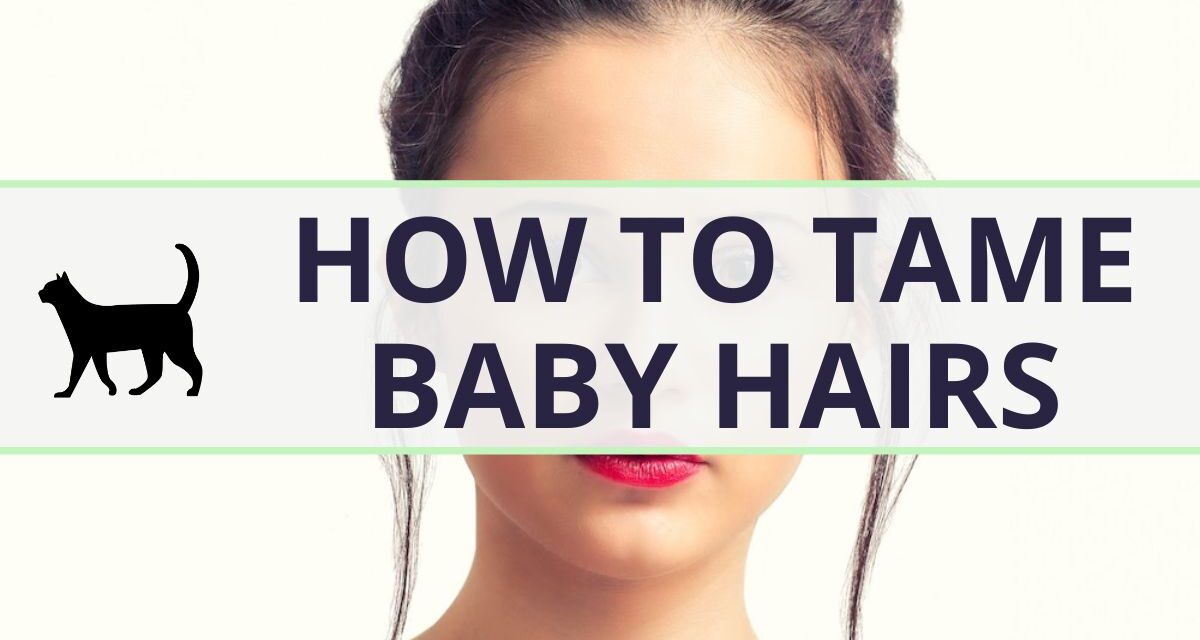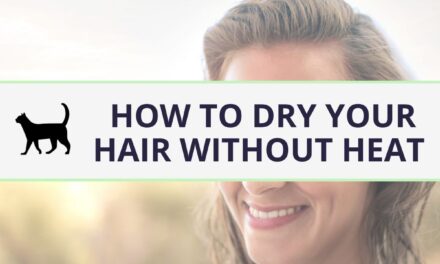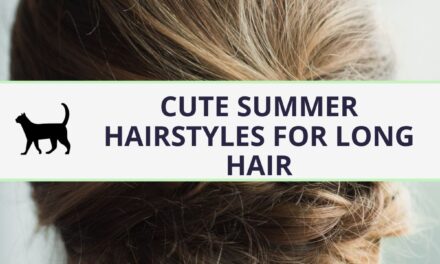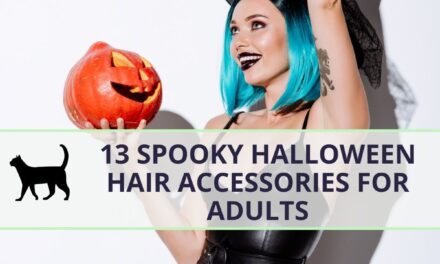When was the last time you made a super chic hairstyle, feeling all fancy, only to discover when looking in the mirror that apparently millions of little wispy hairs decided to NOT want to be part of this? Meet your baby hairs, also called flyaways! Those teeny little hairs can make styling your hair a real challenge, to put it nicely.
As a curly girl with a tendency for dry, frizzy hair, I’ve had to deal with flyaways all my life. And a while ago a dear reader asked me for advice on dealing with those stubborn short hairs. Then I knew I had to do some more research into the best ways to tame baby hairs. And then share it with you!
So today you will learn about the following things:
What is baby hair?
What causes baby hairs?
How do you tame baby hairs?
Baby hairs and cultural appropriation
Disclosure: Some of the links below are so-called provision links, meaning, at no additional cost to you, I can earn a commission if you click through and make a purchase.
What is baby hair?
So what exactly are baby hairs? The definition for these flyaways is simple: Baby hairs are small hairs on top of your head. So far so good. Doesn’t sound too bad so far, right?
But as the name suggests, they “fly away”. If you don’t do anything about them, these whispies have the tendency to stick straight up from your head.
This can really ruin an otherwise perfect hairstyle, especially if you are trying to go for a sleek look. (Believe me, as a teenager all I wanted was a sleek look, and I hardly ever managed. Life was hard.)
But why do many of us have shorter hair on top of our head, in the neck and on our temples?
What causes baby hairs?
I didn’t get more specific in my definition of baby hairs, and left it at “small hairs”. Theoretically, there is only one cause for “real” baby hairs. Yet, practically, people call all kinds of short hairs around the crown of your head baby hairs.
So when you’re asking yourself “Why do i have so many baby hairs on the top of my head?” – you might not be talking about actual baby hairs. Let’s look at the different causes of this phenomenon!
(If you come from the Baby hairs and flyaways story, you can skip a little, you already know this! Or read it for a little more detail!)
1. Baby hairs or breakage?
Many people think that flyaways always come from frizzy broken hair on top of your head. But frizz and
An easy way to find out if your flyaways come from hair breaking off is to take a good look at the tips. Is the tip of those short hairs blunt and as thick as the rest of the hair? Or is the tip thinning out and rather pointy?
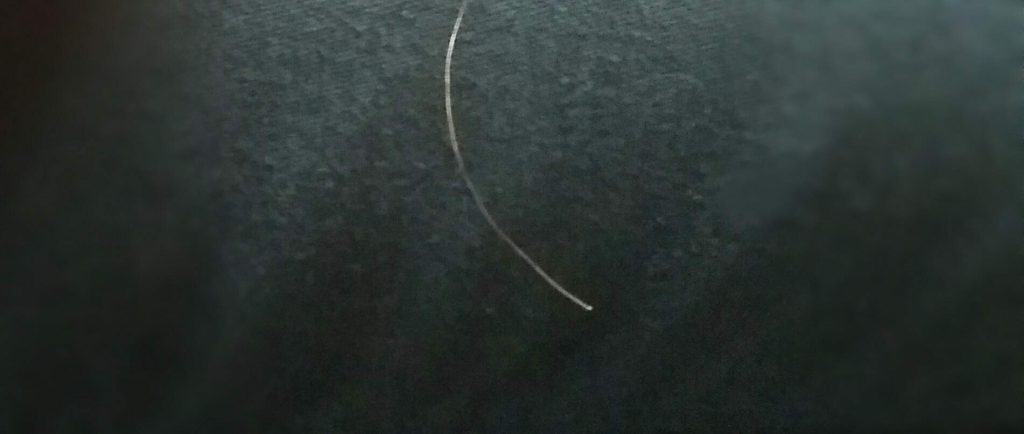
In the first case, you are definitely dealing with breakage. Take a good look at your hair care routine and find out what might be causing it! Also, consider implementing my most important tips for healthy hair growth to automatically get rid of many causes for breakage.
2. New hair growth
Another reason could be related to having had hair loss in the last few months. When you beat hair loss, new hair will start to grow. And then you’ll most literally have “baby” hair growing out of your scalp.
Naturally, this new hair growth is going to be much short than the rest. The good news about this type of baby hair is that you will literally outgrow it. Once it reaches a certain length, you won’t even notice it anymore.
Related: Healthy hair diet: See the best foods for healthy hair!
3. The actual cause of baby hairs

The last cause of baby hair is that it’s simply in your genes. Actually, these are the only “real” baby hairs. You can eliminate all the other causes of baby hair. But this one is permanent until we find out how to change our genes. (Spoiler: I don’t think you should. Embrace those flyaways! But more on how to deal with your baby hairs below.)
If you look at your entire body, you already know that not every type of hair gets to the same length. Even though you probably never trim your eyelashes, they won’t grow long enough to touch your forehead. Ever. The follicle simply isn’t built like that.
And even though baby hairs live on your head, they don’t have the same growth cycle as your longer hair. Simply put, they are like a transition between your super fine body hair and your “main” locks.
Do baby hairs grow out?
So as you can see from the causes of baby hairs above, the “real” baby hairs on your hairline won’t grow out. There is a genetic limit to how long they grow.
If you deal with breakage, frizz, or new growth, on the other hand, all you need is good hair care and some patience. For everyone else, let’s have a look at ways for taming those baby hairs on top of your head.
Related: The inversion method for hair growth
How to tame baby hairs (or deal with them): 9 ways
So now there is one big question left: How to deal with baby hairs?
There are different ways to tame your baby hairs. Some will work for you, some might not. Just make sure you tried all of them before you even think of getting rid of your baby hairs altogether.
Yes, you can laser them away, theoretically. But first of all, that will be expensive. And second of all, they are super cute! Embrace them, and learn how to make them work for you.
Alright. Enough preaching. Let’s get started with tip number 1!
1. Fight frizz
The first and most important step you want to take to reduce the “light socket look” is to make sure you got your frizz under control. Baby hairs are the worst when they are dry, frizzy and sticking straight up from your head.
In most cases, short flyaway hair on top of your head can be significantly reduced by fighting frizz.
So make sure your hair is well moisturized, has no heat damage and you are actively decreasing frizz through your hair care.
For all the details on which things to look out for, which products to use, and so on, make sure to check out my big guide on how to get rid of frizz!
2. Use pretty headbands
You know what I think? I think the headband trend was started by girls with stubborn, frizzy flyaway hair. Someone wondered “What to use for flyaway hair”? and then decided to make this fashionable. Because headbands are the perfect way to tame those baby hairs!
You don’t need to worry about any products, and you’ll definitely look cute with them. While I found these ones* perfect for spring and summer, you can also get warmer ones for fall and winter. For example, check out these crocheted headwraps*!
Related: 7 cute summer hairstyles for long hair
Related: Summer hair care tips – Have the best summer ever!
Related: What you need to know about hair care in winter
3. Use bobby pins
Obviously, you can also clip your baby hairs away with bobby pins. If they are long enough, that is. And if you haven’t lost all of your bobby pins yet. (What, is that just me? Everyone loses their bobby pins, right?!)
A little hack to not lose the bobby pins THAT easily is to get a magnetic pin holder*(!!). This genius invention has a magnet strong enough to catch all hair clips and pins you throw toward its surface. And yes, that also means that cleaning up your pins after using them is only a matter of seconds now.
You can get your new hair buddy here*!
Related: 7 fashionable Christmas hair clips for adults to get this year
4. Pomade
The best hair product for flyaway hair is probably pomade. If you know how to use it, pomade smoothes out even the frizziest of frizzy hairs and can get any unruly lock to lay low.
So if all you’re wondering is how to keep flyaways down, this is the best product for you!
On the other hand, it’s quite easy to overdose on pomade. And then you don’t have flyaways anymore. But all your volume will be gone, too. And things might look a little too shiny if you know what I mean.
So if you decide to try pomade, get one with matte finish first, like this one*. And start with tiny little amounts. You can still add more later!
5. Hair gel & a toothbrush
A method that has become quite popular, even fashionable recently, is to use an edge control hair gel* and a toothbrush to “lay your edges”. Or you can get even tiny hairbrushes specifically for this*.
While this method definitely works, doing gelled down baby hairs as a white girl can come with the unpleasant aftertaste of cultural appropriation. I’ll say more about this below.
6. Water
In some cases, the solution can be so easy, and so close. If you don’t have anything else handy, but you need to get rid of those baby hairs RIGHT NOW, try water. Yes, really!
Take those whispies, properly soak them with water, and then while they’re really wet style them the way you want them to be when dry.
And then, don’t touch them anymore until they’re dry.
7. Hairspray
For some people, hairspray does the trick to tame the baby hairs. But not simply by spraying it all over.
No, they mist a fine brush with the hairspray, similar to the hair gel technique. Then they carefully brush the flyaways wherever they’re supposed to go.
First of all, I have to say, that for me personally, hairspray never worked. But some people swear on this method, so of course, I had to put it on this list. Secondly, I think that this method might work really well to get rid of flyaways after straightening your hair.
I don’t straighten my hair with heat anymore, but I remember it feeling dry after doing so. Hairspray, on the other hand, used to weigh down my hair and stop the “straightening frizz”. (If you still do straighten your hair, you probably know what I mean.)
Related: How to fix crunchy hair – all the solutions
8. Wear loose hairdos and go for a romantic look

My favorite tip for dealing with baby hairs is to actually embrace them. Do you know how many women pull out a few strands of hair to make an updo look softer? Almost everyone!
Unsurprisingly, these loose strands fit in much better if they actually are a little shorter than the rest. So having baby hairs is really an advantage when it comes to styling a look that looks a little relaxed and just… friendlier.
And if you really can’t deal with the baby hairs at all, you can still go for a hairstyle that parts in the middle. As most baby hairs are on your temples, your neck and on your forehead, they get weighed down by the rest of the hair.
Related: 6 quick and easy hairstyles for long hair to do yourself
9. Wear a SLAP
Okay, I have to admit: some days, embracing my whispies is simply not an option. You know, those crazy days, when my hair is super dry and all this short frizzy hair on top of my head sticks straight up?
On those days, I simply wear my SLAP*. In case you didn’t know, SLAP stands for satin lined cap and I’m a total fangirl of these.
First of all, the satin in SLAPs is actually hair-friendly, unlike cotton. So I can use them to protect my hair from damage while I sleep, from the sun and from cold.
Second of all, these caps actually fit all of my hair. I haven’t found others that could do it so far.
And, last but not least, I can use them to cover up any bad hair days or – you guessed it – stubborn baby hairs.
You can find the awesomeness that is SLAPs here*!
Related: My Satin lined cap review: benefits & tips
Baby hairs and cultural appropriation
Like I said before, “laying your edges” as a white girl can easily get you called out for cultural appropriation.
Baby hairs happen for people of all colors. But to use gel or pomade and a small brush to form your edges into beautiful patterns used to be practiced specifically by women of color for decades.
In recent years, this became a trend in high fashion though. Designers took the idea of gelling your baby hairs and applied it to their (white) models. Without going into details about cultural appropriation here, it is safe to say that this quickly became a very controversial practice.
So use your own discretion and social awareness when deciding if to try this trend!
How do you deal with baby hairs?
Now it’s your turn. Tell me in the comments how you deal with baby hairs! Love them? Hate them? Found the perfect way to tame them? I’d love to hear your opinion.
And, as always, make sure to pin this for later!
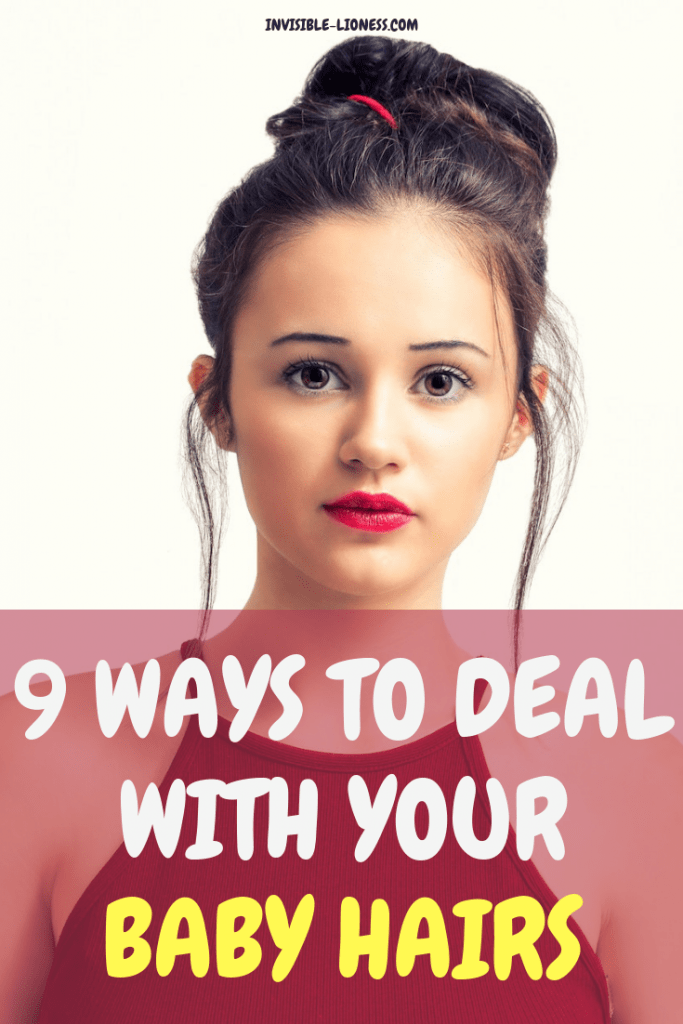
*These links are so-called provision links, meaning, at no additional cost to you, I can earn a commission if you click through and make a purchase.
